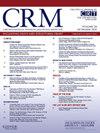Transcarotid versus transfemoral transcatheter aortic valve replacement: A systematic review and meta-analysis
IF 1.6
Q3 CARDIAC & CARDIOVASCULAR SYSTEMS
引用次数: 0
Abstract
Background
In the 2021 Transcatheter Valve Therapy (TVT) registry, 8.9 % of patients underwent TAVR via access sites other than the femoral artery. Transthoracic approaches may be contraindicated in some patients and may be associated with poorer outcomes. Therefore other alternative access routes are increasingly being performed. We conducted a systematic review of the literature on transcarotid transcatheter aortic valve replacement (TC-TAVR) and meta-analysis comparing outcomes of TC-TAVR and other access routes.
Methods
We comprehensively searched for controlled randomized and non-randomized studies from 4 online databases. We presented data using risk ratios (95 % confidence intervals) and measured heterogeneity using Higgins' I2.
Results
Sixteen observational studies on transcarotid TAVR were included in the analysis; 4 studies compared TC-TAVR vs TF-TAVR. The mean age and STS score for patients undergoing TC-TAVR were 80 years and 7.6 respectively. For TF-TAVR patients, mean age and STS score were 81.2 years and 6.5 respectively. There was no difference between patients undergoing TC-TAVR and TF-TAVR in the following 30-day outcomes: MACE [8.4 % vs 6.7 %; OR 1.32 (95 % CI 0.71–2.46 p = 0.38) I2 = 0 %], mortality [5.6 % vs 4.0 %; OR 0.42 (95 % CI 0.60–3.37, P = 0.42) I2 = 0 %] and stroke [0.7 % vs 2.3 %; OR 0.49 (95 % CI 0.09–2.56, P = 0.40) I2 = 0 %]. There was no difference in 30-day major vascular complications [0.7 % vs 3 %; OR 0.55 (95 % CI 0.06–5.29, P = 0.61) I2 = 39 %], major bleeding [0.7 % vs 3.8 %; OR 0.39 (95 % CI 0.09–1.67, P = 0.21) I2 = 0 %], and moderate or severe aortic valve regurgitation [8.6 % vs 9.9 %; OR 0.89 (95 % CI 0.48–1.65, P = 0.72) I2 = 0 %].
Conclusion
There are no significant differences in mortality, stroke MACE and major or life-threatening bleeding or vascular complications when TC-TAVR is compared to TF-TAVR approaches.
经颈动脉与经股动脉经导管主动脉瓣置换术:系统回顾和荟萃分析。
背景:在2021年经导管瓣膜治疗(TVT)登记中,8.9%的患者通过股动脉以外的入路接受了TAVR。经胸入路可能是某些患者的禁忌症,而且可能与较差的治疗效果有关。因此,越来越多的患者选择其他途径进行治疗。我们对经颈动脉经导管主动脉瓣置换术(TC-TAVR)的文献进行了系统性回顾,并对TC-TAVR和其他入路的疗效进行了荟萃分析:我们从 4 个在线数据库中全面检索了对照随机和非随机研究。我们使用风险比(95% 置信区间)来展示数据,并使用 Higgins'I2 来衡量异质性:16项关于经颈动脉TAVR的观察性研究被纳入分析;4项研究比较了TC-TAVR与TF-TAVR。接受TC-TAVR的患者的平均年龄和STS评分分别为80岁和7.6分。TF-TAVR患者的平均年龄和STS评分分别为81.2岁和6.5分。接受TC-TAVR和TF-TAVR的患者在以下30天结果方面没有差异:MACE [8.4 % vs 6.7 %; OR 1.32 (95 % CI 0.71-2.46 P = 0.38) I2 = 0 %]、死亡率[5.6 % vs 4.0 %; OR 0.42 (95 % CI 0.60-3.37, P = 0.42) I2 = 0 %]和中风[0.7 % vs 2.3 %; OR 0.49 (95 % CI 0.09-2.56, P = 0.40) I2 = 0 %]。30 天主要血管并发症[0.7 % vs 3 %; OR 0.55 (95 % CI 0.06-5.29, P = 0.61) I2 = 39 %]、大出血[0.7 % vs 3.8 %; OR 0.39 (95 % CI 0.09-1.67, P = 0.21) I2 = 0 %]、中度或重度主动脉瓣反流[8.6 % vs 9.9 %; OR 0.89 (95 % CI 0.48-1.65, P = 0.72) I2 = 0 %]:结论:TC-TAVR与TF-TAVR相比,在死亡率、中风MACE、大出血或危及生命的出血或血管并发症方面没有明显差异。
本文章由计算机程序翻译,如有差异,请以英文原文为准。
求助全文
约1分钟内获得全文
求助全文
来源期刊

Cardiovascular Revascularization Medicine
CARDIAC & CARDIOVASCULAR SYSTEMS-
CiteScore
3.30
自引率
5.90%
发文量
687
审稿时长
36 days
期刊介绍:
Cardiovascular Revascularization Medicine (CRM) is an international and multidisciplinary journal that publishes original laboratory and clinical investigations related to revascularization therapies in cardiovascular medicine. Cardiovascular Revascularization Medicine publishes articles related to preclinical work and molecular interventions, including angiogenesis, cell therapy, pharmacological interventions, restenosis management, and prevention, including experiments conducted in human subjects, in laboratory animals, and in vitro. Specific areas of interest include percutaneous angioplasty in coronary and peripheral arteries, intervention in structural heart disease, cardiovascular surgery, etc.
 求助内容:
求助内容: 应助结果提醒方式:
应助结果提醒方式:


